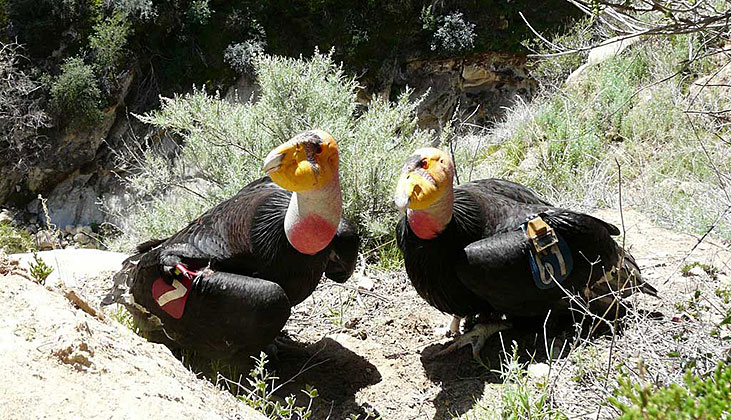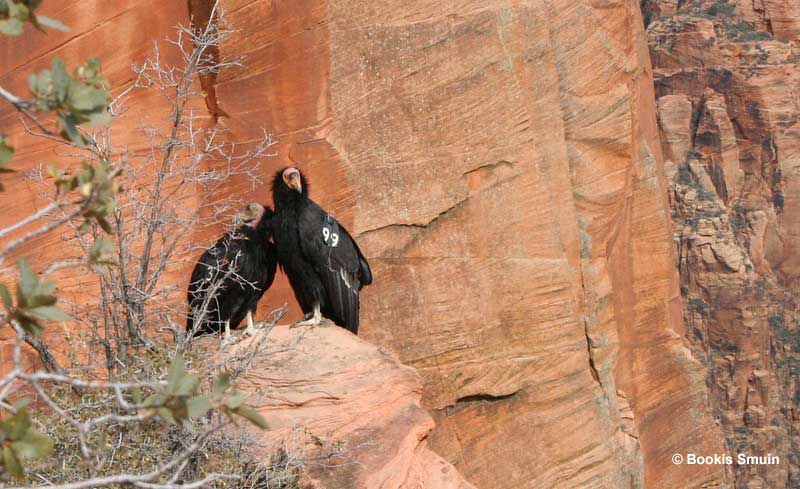The California Condor (Gymnogyps californianus) is a critically endangered vulture species native to North America.
With a wingspan exceeding 9 feet, it is one of the largest flying birds. It is recognizable by its black plumage, featherless head, and white wing patches. Their population dropped to under 30 at some point, but thankfully, they’re on a slow but steady road to recovery.
On this page
Identification
California Condors are massive birds, measuring 3.5-4.5 feet long. Their wings are long, 8 feet 2 inches to 9 feet 10 inches across, and broad with their primary feathers spreading out like fingers. In flight, you can recognize them by their slightly hunched posture, their relatively short and broad tail, and their small head.
Male and female California Condors look similar, but males are generally larger than females, although the difference isn’t that big.
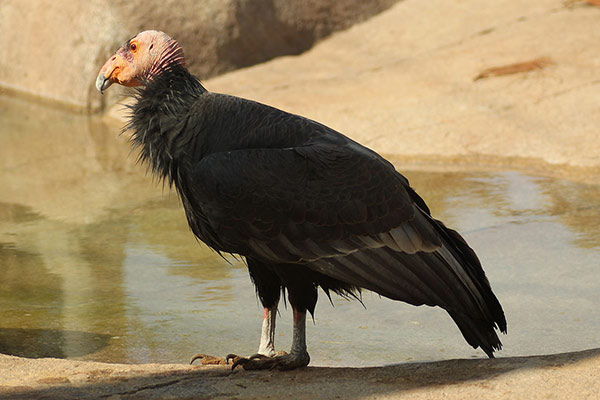
Adult condors have overall black plumage with distinct white triangular patches on the undersides of their wings. They have featherless heads and necks that are pale purple and pinkish to pale orange and yellow, with the only exception being the black tuft of feathers on the forehead. The base of the neck is surrounded by a fluffy frill of feathers that looks like they’re wearing a fancy scarf.
Juvenile California Condors are darker than the adults. Their plumage is mostly mottled dark brown, almost black, and instead of the white wing patches, they have gray ones. Additionally, the skin on their head is dark gray or blackish instead of pinkish and yellowish.
Vocalizations
California Condors are not particularly vocal birds and generally remain silent. The sounds they produce are thus rather limited. They don’t have a proper call but can produce a variety of snorts and hisses (that sound like a lion was throwing up a hairball), most commonly when defending their nest and offspring. Chicks can grunt, hiss, and wheeze.
Food
California Condors feed on carrion, preferably on recently perished large animals, such as cattle, bears, horses, sheep, donkeys, goats, whales, sea lions, and deer.
If necessary, they also feed on smaller creatures, such as squirrels or rabbits, but they rarely touch bird or reptile carcasses. In fact, they prefer medium-sized or smaller creatures for their bones, eating them to meet their calcium needs. They are equipped with powerful beaks designed for tearing into the tough hides of large carcasses.
Condors have extensive foraging territories that can cover hundreds of square miles. This allows them to search for carrion across a wide range of landscapes, including open areas, mountains, and coastal regions.
They travel up to 160 miles in a single day in search of food, soaring on thermal updrafts that help them minimize energy expenditure.
These birds rely on their visual acuity to locate potential food sources. They have keen eyesight and locate carrion either by spotting it directly or looking for groups of other scavengers. Since they are rather intimidating, they can scare away most other competitors, except for golden eagles and bears. However, they generally aren’t aggressive towards other birds from their species.
Nesting and Eggs
The earliest California Condors can start breeding is when they get 6 years old. Males spread their wings, puff their neck feathers, and bob their heads to impress females while slowly approaching her. If the female accepts, she lowers her head. They mate for life.
California Condors prefer nesting sites in remote areas, often on cliffs or in caves, but can also opt for large and tall trees.
The chosen location provides a vantage point for spotting potential threats and access to updrafts for takeoff. They generally have more than one nesting site and may switch them from year to year.
The female usually selects the nest site, and both the male and female contribute to the construction of the nest. Nests are loose piles of materials found near the nest site consisting of sticks and debris. They may also opt for laying the egg directly on the floor.
The female typically lays a single pale blue-green egg every two years. Their eggs are large, measuring 3.6-4.7 inches long and 2.4-2.7 inches wide. The incubation period lasts 53-60 days. Both parents play active roles in raising the chick. They take turns incubating the egg, protecting the nest, and feeding the chick once it hatches.
The chick is born helpless and covered in white down feathers. It relies entirely on its parents for food and protection. The fledging period, during which the chick develops its flight feathers, practices flying, and gains independence can last up to 7 months.
Current Situation
Historically, California Condors had a wide distribution across western North America. However, now they are only found in parts of California, Arizona, Utah, and Baja California.
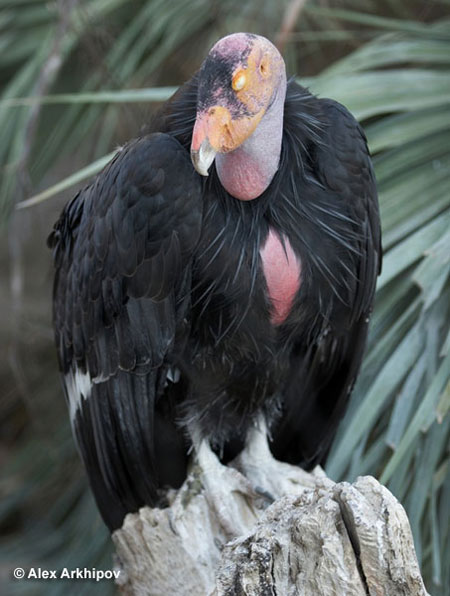
California Condors can be found soaring across a variety of landscapes, including coastal areas, deserts, and forested mountainous regions.
They prefer remote and less accessible regions that have little to no human disturbance and have specific requirements for foraging and nesting. The birds need open areas to spot carrion and cliffs, caves, or large trees for nesting and take-off.
California Condors are listed as critically endangered on the IUCN Red List. At one point, their population was reduced to 22 birds, which were then captured for captive breeding. Now, although their population is still in the low hundreds, their population is increasing thanks to captive breeding efforts and reintroduction to the wild.
Facts
- The largest wingspan for California Condors on record is 10 feet, but unverified claims of wingspans of up to 11 feet have been reported. In fact, these birds are mistaken for distant airplanes more often than for other birds.
- California Condors need to eat about 5-7% of their weight in a day. In the wild, they may only have to eat every 2-3 days and can even go for a week without eating, because they can store up to 3 pounds of meat in their crop.
- One of the reasons they are so endangered is their slow reproduction rate. They only lay one egg every other year. However, if that egg is lost, they often lay another to replace it. Breeders take advantage of this by removing and taking care of the first one to increase the reproduction rate.
- Condor parents won’t take it easy on their offspring. If a nestling is overenthusiastic or wants to finish feeding the chick, they will grab their neck with their foot and press it against the floor.
- California Condors can live up to 80 years old, but their average life expectancy is about 60 years.
Similar Species
California Condors are similar to some vultures and eagles, such as Turkey Vultures and Golden Eagles. However, if you know what to look for, distinguishing them is generally easy, unless they’re very high up in the air.
Turkey Vulture
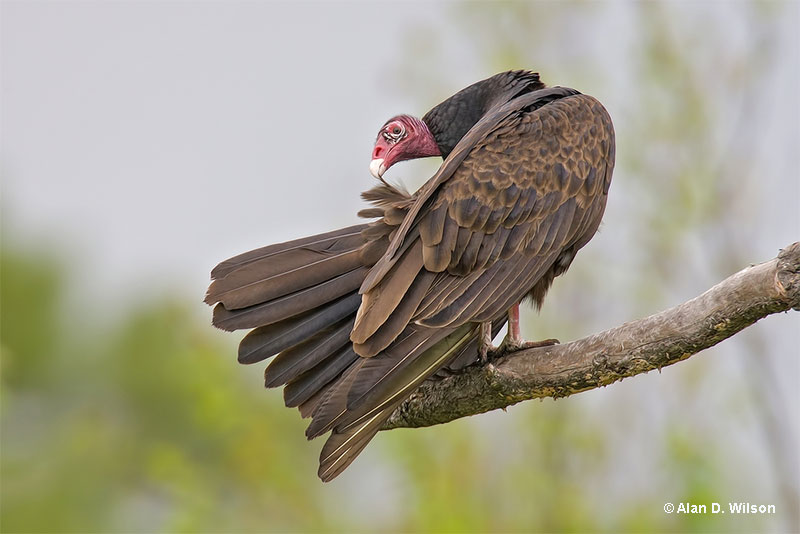
Turkey Vulture is perhaps the most similar species to the California Condor. They prefer similar habitats but have a huge range covering most of the Americas, whereas California Condors are only limited to a very restricted area.
Turkey vultures are smaller than California Condors, with a wingspan typically ranging from 5.5 to 6.5 feet. Turkey Vultures have dark brown to black plumage with a featherless, red head. Their wings are long and broad, and the undersides are two-toned, appearing silver or whitish at the edges.
On the other hand, California Condors have black plumage with prominent white patches on the undersides of their wings. Their heads are mostly featherless, with pinkish to orange skin, and they lack the red heads seen in Turkey Vultures.
Golden Eagle
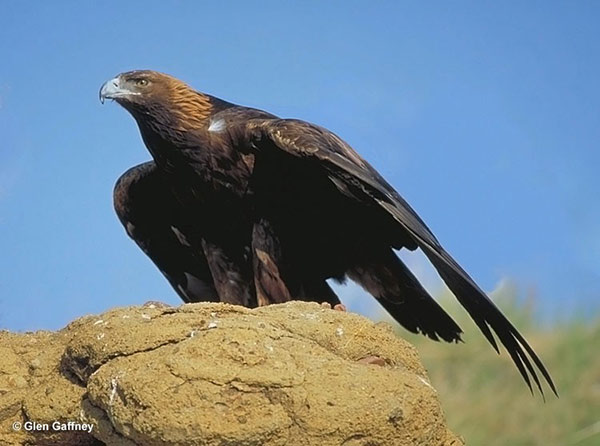
Golden Eagles’ range covers most of North America, so you only have to puzzle which one is which where their ranges overlap. Their preferred habitats are similar, and they also avoid humans, but they can be found at higher elevations.
Golden Eagles are dark brown all over. Up close, there is no mistaking them – Golden Eagles are smaller and have a feathered head. In flight, look at the tail and the underside of the wings.
Golden Eagles have longer and more rounded tails compared to their wings and they lack the white wing patches. Immature Golden Eagles have similar white markings on the underside of their wings, but the base of their tail is also white.
Bald Eagle
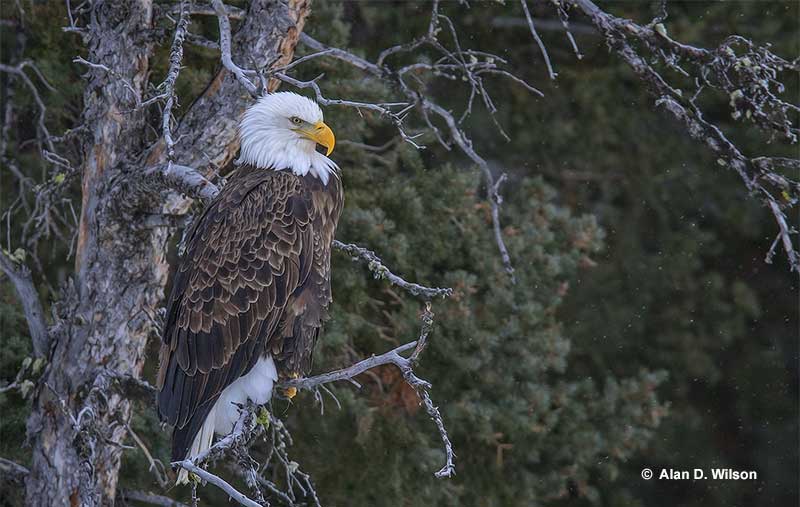
Bald Eagles can be seen across most of North America and also in places where the California Condor resides. They prefer to live near bodies of water in forested areas.
Adult Bald Eagles have a black body and wings, a white head, and a rounded white tail. It is fairly easy to tell them apart, as Bald Eagles are smaller, lack the white wing patches, and have white heads and tails whereas California Condors have black tails and colorful heads. Juvenile Bald Eagles look slightly more similar though, as they’re dark overall with white mottled wings and tails.
Related: Bird names starting with C
Frequently Asked Questions
Why did the California Condor go extinct?
California Condor almost went extinct due to lead poisoning, habitat loss, poaching, DDT contamination, and power-line accidents.
How many California Condors are left?
There are 559 California Condors left as of 2023.
Are California Condors aggressive?
California Condors are aggressive toward other species near carcasses and towards intruders near their nests.
Are California Condors bigger than eagles?
California Condors are bigger than eagles; in fact, they are one of the largest birds in North America.
How long do condors live?
Condors live for 45-80 years, with an average life expectancy of 60 years.

